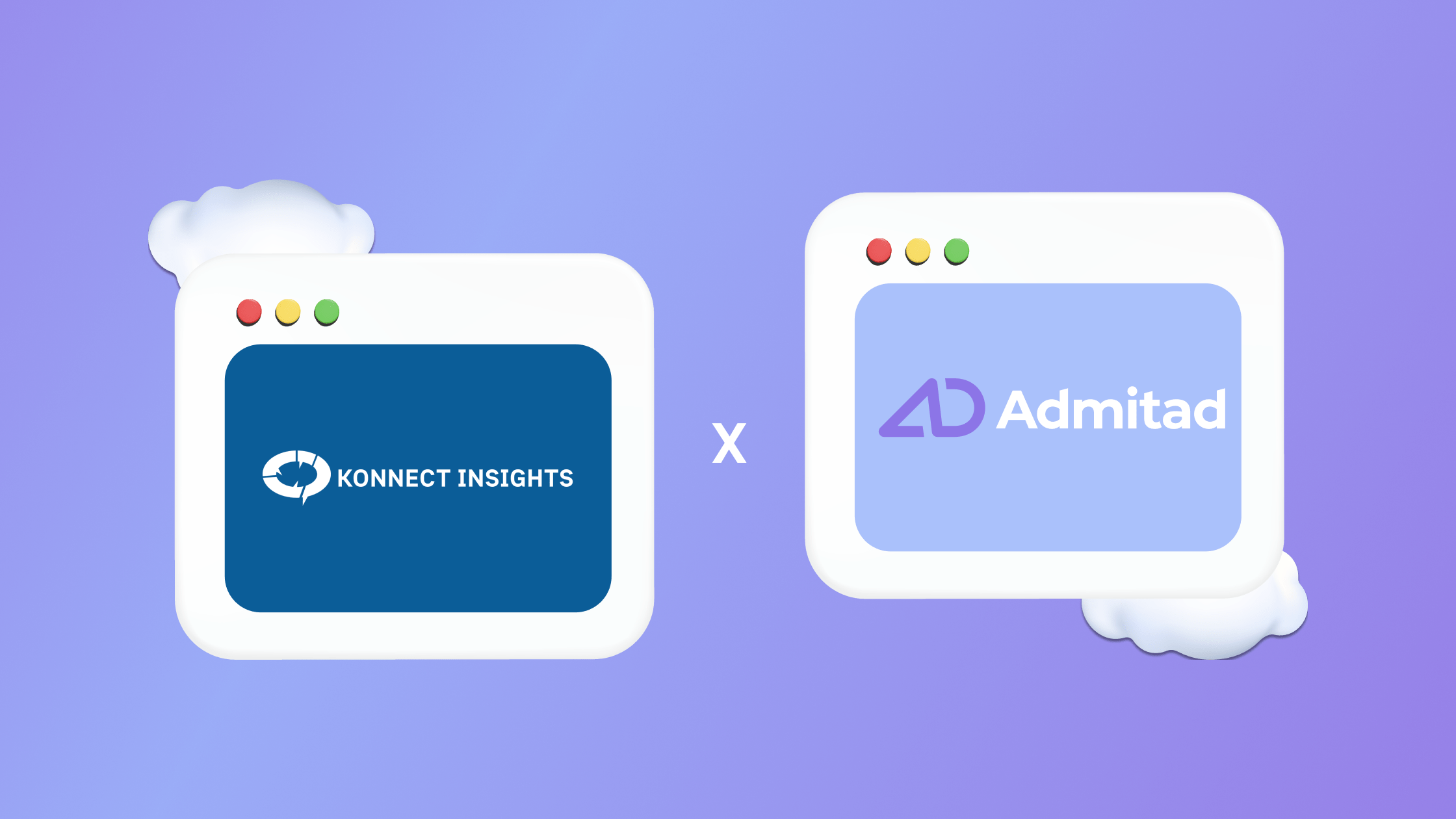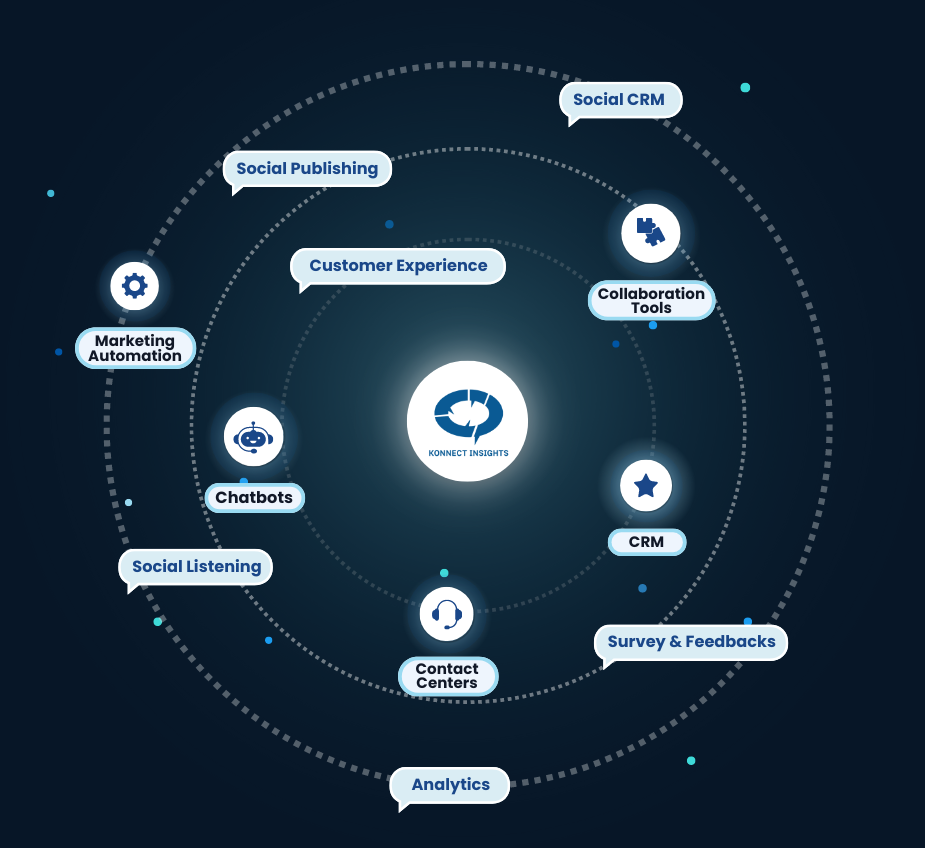In today’s digital age, the power of social media is undeniable. With billions of users worldwide, platforms like Facebook, Twitter, and Instagram have become gold mines of data, offering insights into user behaviors, preferences, and sentiments. But how can businesses tap into this vast reservoir of information? The answer lies in social media analytics for product development.
By leveraging these analytics, companies can better understand their target audience, refine their products, and foster innovation. In this article, we will delve into the various ways social media analytics can be harnessed for product innovation and development, ensuring businesses stay ahead of the curve and meet the ever-changing demands of their consumers.
The Role of Social Media Analytics in Product Development
Social media platforms are more than just spaces for sharing photos, updates, and memes. They have evolved into rich ecosystems where consumers voice their opinions, share their experiences, and discuss their needs. Businesses can tap into these conversations and derive actionable insights by harnessing the power of social media analytics for product development. Let’s explore how.
Real-time Feedback and Market Insights
One of the most significant advantages of social media in innovation is its immediacy. When a new product is launched, or an existing one is updated, feedback starts pouring in almost instantly. This real-time feedback is invaluable. Through comments, shares, likes, and even direct messages, customers provide businesses with immediate reactions to their products.
For instance, if a tech company releases a new software update and users start tweeting about a particular bug, the company can quickly identify the issue and work on a fix. Similarly, if a fashion brand launches a new clothing line and it receives an overwhelming number of positive comments on Instagram, it can gauge its popularity and increase production or marketing efforts around it.
Identifying Unmet Needs and Pain Points
Social media analytics in product innovation plays a pivotal role in understanding what the market lacks. By monitoring conversations, questions, and discussions related to a particular industry or product category, businesses can identify gaps in the market.
For example, if a significant number of consumers in a beauty forum discuss the lack of a particular shade of foundation for their skin tone, it indicates an unmet need. Brands can then develop products that cater to this specific requirement, ensuring they address the pain points of their potential customers.
This proactive approach, driven by social analytics and product development, ensures businesses remain relevant and responsive to their audience’s needs.
Monitoring Competitor Activity and Industry Trends
Staying ahead in the business world requires more than just understanding your customers; keeping an eye on what your competitors are doing is equally crucial. Social media analytics allow businesses to monitor competitor activity closely. Companies can glean insights into their competitors’ strengths and weaknesses by analyzing their posts, customer interactions, and promotional strategies.
Moreover, social media is often the first place where new industry trends emerge. Whether it’s a new fashion style, a technological innovation, or a shift in consumer behavior, these trends often surface on platforms like Twitter or TikTok before they become mainstream. By keeping a finger on the pulse of social media, businesses can anticipate market shifts and adapt their product strategies accordingly.
Personalizing Product Offerings
The era of one-size-fits-all is long gone. Today’s consumers expect products and services tailored to their unique needs and preferences. Social media analytics for product development provides businesses with sufficient data on individual consumer behaviors, interests, and preferences. By analyzing this data, companies can create personalized product offerings that resonate more deeply with their target audience.
Imagine a fitness brand that notices a trend in its followers sharing posts about high-intensity interval training (HIIT). By recognizing this trend, the brand can develop and promote HIIT-specific gear or workout plans, catering directly to this interest.
Collaborative Innovation with Customers
Social media platforms have bridged the gap between brands and their consumers. No longer are businesses solely reliant on focus groups or surveys to gather feedback. They can engage directly with their audience through platforms like Twitter or Facebook, fostering a sense of collaborative innovation.
For instance, a snack company might run a poll on Instagram asking followers to vote on a potential new flavor. Not only does this engage the audience, but it also ensures that the product development is in line with consumer desires. This approach to product design in social media ensures that the end product is something that the market genuinely wants.
Analyzing Sentiment and Brand Perception
Beyond the raw data of likes, shares, and comments, social media analytics offers a deeper dive into how consumers feel about a brand or product. Sentiment analysis tools can scan social media posts and comments to gauge the overall sentiment, be it positive, negative, or neutral.
For example, suppose a new smartphone is released and the majority of social media chatter is negative due to a specific feature. In that case, companies can quickly identify this pain point and address it in future iterations or through updates.
This real-time feedback loop, facilitated by social media analytics for innovation management, ensures that brands remain responsive and agile in their product development strategies.
Quantifying Customer Demand
One of the most tangible benefits of social media analytics in product innovation is the ability to quantify demand. Businesses can gauge its popularity by monitoring the volume of conversations around a particular product or feature. If a teaser post about a new product garners significant attention and engagement, it’s a clear indicator of high demand.
This data-driven approach allows businesses to make informed decisions about production volumes, pricing strategies, and inventory management, ensuring they’re aligned with actual market demand.
Optimizing Marketing and Launch Strategies
The insights derived from social media aren’t just beneficial for product development but equally valuable for marketing. Businesses can craft more effective marketing campaigns by understanding what resonates with their audience.
For instance, if a product teaser video goes viral on TikTok, it might be worth investing more in video marketing for that platform. Conversely, if a particular hashtag related to the product trends on Twitter, brands can leverage this in their promotional strategies.
Also Read : how social listening can assist in product launches.
Ethical Considerations in Social Media Analytics for Product Development
In the rush to harness the power of social media in new product development, it’s essential not to overlook the ethical implications of such practices. As businesses dive deep into the vast ocean of social media data, they must tread carefully, ensuring they respect user privacy, maintain transparency, and uphold the trust of their audience. Here, we’ll explore some of the key ethical considerations that companies should keep in mind.
Privacy and Data Protection
One of the foremost concerns when dealing with social media analytics is the issue of user privacy. While most social media platforms provide publicly available data, it’s crucial to remember that not all information is meant for commercial use. Businesses must ensure they have the necessary permissions to access and use the data, especially when dealing with private accounts or direct messages.
Moreover, with regulations like the General Data Protection Regulation (GDPR) in place, companies must handle user data carefully, ensuring it’s stored securely and used responsibly. Misusing or mishandling this data can lead to a loss of trust and significant legal repercussions.
Transparency and Consent
Closely tied to the issue of privacy is the need for transparency. If a business is using social media data to inform its product development, it should be open about its data collection and analysis methods. This includes being clear about what data is being collected, how it’s being used, and for what purpose.
Furthermore, in cases where explicit user data is required, businesses should seek informed consent. This means ensuring users are fully aware of how their data will be used and giving them the option to opt-out if they so choose.
Avoiding Confirmation Bias
When diving into social media analytics for innovation management, there’s a risk of confirmation bias, which means interpreting data in a way that confirms pre-existing beliefs or assumptions. Businesses must approach the data objectively, ensuring they don’t cherry-pick information that aligns with their existing views. This requires a commitment to rigorous and unbiased data analysis, ensuring the insights derived are genuine and not merely a reflection of preconceived notions.
Respecting Cultural and Contextual Nuances
Social media is a global platform, with users from diverse cultural, social, and economic backgrounds. When analyzing data, it’s essential to be aware of these nuances. What might be a common sentiment or behavior in one region could be entirely different in another. Businesses must be sensitive to these differences, ensuring their product development strategies are inclusive and culturally aware.
Ensuring Fair Representation
Lastly, while social media platforms boast billions of users, it’s essential to remember that they don’t represent the entire consumer sentiment. Relying solely on social media analytics might lead to a skewed perspective, overlooking voices that aren’t as active or represented on these platforms.
Businesses should strive for a holistic approach, combining social media insights with other forms of market research to ensure a well-rounded understanding.
The Future of Innovation: Data-driven Solutions
As we are already living in the digital age, the role of social media analytics in product development and innovation is poised to become even more pivotal. The convergence of technology and data promises a future where businesses can harness the power of insights derived from social media to create products that truly resonate with their audience.
Also Read : Maximizing Business Growth: Harnessing The Potential Of Social Media Data Analytics
Let’s explore the exciting prospects that lie ahead in this data-driven future.
Advanced Predictive Analytics
One of the most promising avenues for social media analytics in product development is predictive analytics. With access to vast datasets and increasingly sophisticated algorithms, businesses can forecast consumer trends and preferences with unprecedented accuracy.
Imagine a scenario where a cosmetics company uses historical social media data to predict the next big beauty trend and proactively launch products that align with it. This data-driven approach reduces guesswork and minimizes the risk of market misalignment.
Artificial Intelligence and Machine Learning Integration
Artificial intelligence (AI) and machine learning (ML) are revolutionizing the way businesses approach social media analytics. These technologies can analyze vast volumes of data in real-time, identifying patterns, and sentiment trends, and even predicting consumer behavior.
For example, AI-powered chatbots can engage with customers on social media, gather feedback, and make product recommendations, all while continuously learning and improving from user interactions.
Enhanced Personalization
Personalization is the cornerstone of modern marketing and product development. Social media analytics allows businesses to create highly personalized product offerings and marketing campaigns based on individual user behaviors and preferences. In the future, we can expect even more sophisticated personalization algorithms that deliver tailored product recommendations and experiences, increasing customer satisfaction and brand loyalty.
With the Konnect Insights Customer Experience Management suite, users have the ability to unify their customer care and marketing efforts to provide a truly omnichannel approach to their customer experience management
Augmented Reality (AR) and Virtual Reality (VR)
The integration of AR and VR with social media analytics opens up exciting possibilities for product development. Imagine a fashion brand using AR filters on platforms like Instagram to allow users to virtually try on clothing items, assess how they look, and even receive feedback from their social network. Such immersive experiences can lead to more informed purchasing decisions and enhanced user engagement.
Real-time Customer Collaboration
Collaborative innovation with customers will evolve in real-time. Social media platforms will continue to serve as the meeting point between businesses and their audience. In the future, we can anticipate tools and platforms designed specifically for collaborative product development, enabling customers to provide input, vote on features, and participate actively in the creative process.
Ethical AI and Data Governance
As the use of social media analytics grows, ethical considerations will take center stage. The future of innovation will be characterized by increased emphasis on responsible AI and data governance. Companies will need to invest in AI systems that provide valuable insights, respect user privacy, maintain transparency, and mitigate bias.
Integrated Data Ecosystems
The future of innovation lies in the integration of data from various sources. Social media analytics will not exist in isolation but will be part of a broader data ecosystem that includes customer relationship management (CRM), sales, and supply chain data. This integrated approach will enable businesses to make holistic decisions that align with market trends and operational capabilities.
For Instance, Konnect Insights provides its user with ‘one view of the customer’ which enables users across teams to address the client as a whole. Having a unified approach to addressing clients enables brands to take their customers’ satisfaction to the next level. Read why having ‘one of the customer’ is important.
Conclusion
In the era of data-driven decision-making, social media analytics has emerged as a linchpin for businesses seeking to thrive in the digital age. Its role in product development and innovation is nothing short of transformative.
By leveraging real-time feedback, market insights, and ethical considerations, companies can create products that resonate with their audience, stay ahead of competitors, and pioneer the future of customer-centric innovation.
The journey from monitoring social media conversations to predictive analytics and AI-driven personalization represents a promising trajectory for businesses poised to embrace this data-driven revolution.
FAQs
Q1. What is social media analytics for product development?
Ans. Social media analytics for product development is the systematic process of collecting, analyzing, and interpreting data from social media platforms to inform and guide the creation, enhancement, and marketing of products. It involves the extraction of valuable insights from user-generated content, engagement metrics, and market trends found on social media channels.
Q2. How can social media analytics provide real-time feedback and market insights?
Ans. Social media analytics offer real-time feedback and market insights by continuously monitoring user-generated content, comments, and interactions. This enables businesses to promptly identify customer sentiments, trends, and emerging issues related to their products or industry. By analyzing this data, they can adapt and respond swiftly to changing market dynamics.
Q3. How can social media analytics assist in monitoring competitor activity and industry trends?
Ans. Social media analytics enables businesses to monitor competitor activity by tracking their social media profiles, content, and customer interactions. By observing their strategies and customer feedback, companies can gain insights into competitors’ strengths and weaknesses. Additionally, social media analytics helps identify emerging industry trends as they surface in discussions, making it a valuable tool for staying competitive and innovative.
Q4. How can collaborative innovation with customers be facilitated through social media analytics?
Ans. Collaborative innovation with customers through social media analytics involves actively engaging with users on social platforms. By soliciting feedback, suggestions, and ideas, businesses can co-create and refine products with their customers. Social media analytics provides a direct channel for interaction, fostering a sense of partnership and co-creation in the product development process.
Q5. What is sentiment analysis in social media analytics, and why is it essential?
Ans. Sentiment analysis in social media analytics involves evaluating the emotional tone or sentiment expressed in social media posts and comments. It is essential because it helps businesses understand how customers perceive their brand, products, and marketing efforts.
By gauging sentiment, companies can identify areas for improvement, adjust strategies, and maintain a positive brand image.
Q6. How can social media analytics quantify customer demand?
Ans. Social media analytics quantifies customer demand by tracking the volume and patterns of discussions, mentions, and engagement related to a specific product or feature. This data provides businesses with a quantitative measure of customer interest and demand.
By analyzing these metrics, companies can make informed decisions about production, pricing, and inventory management.
Q7. In what ways can social media analytics optimize marketing and launch strategies?
Ans. Social media analytics optimizes marketing and launch strategies by providing insights into platform preferences, content performance, and audience behavior. This data-driven approach allows businesses to identify the most effective channels, content types, and timing for marketing campaigns.
By tailoring strategies to what resonates most with their target audience, companies can maximize the impact and success of their marketing efforts.

































